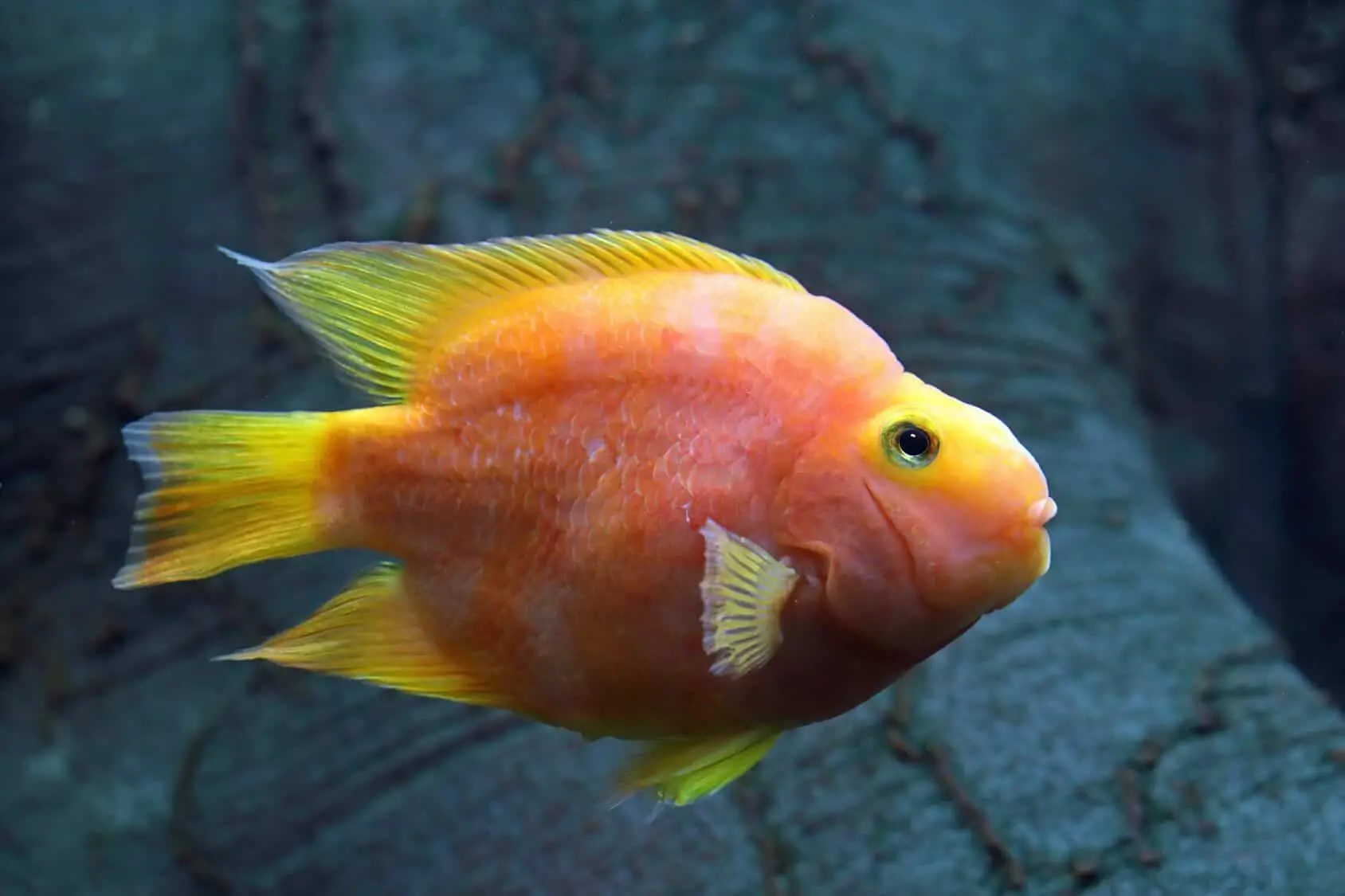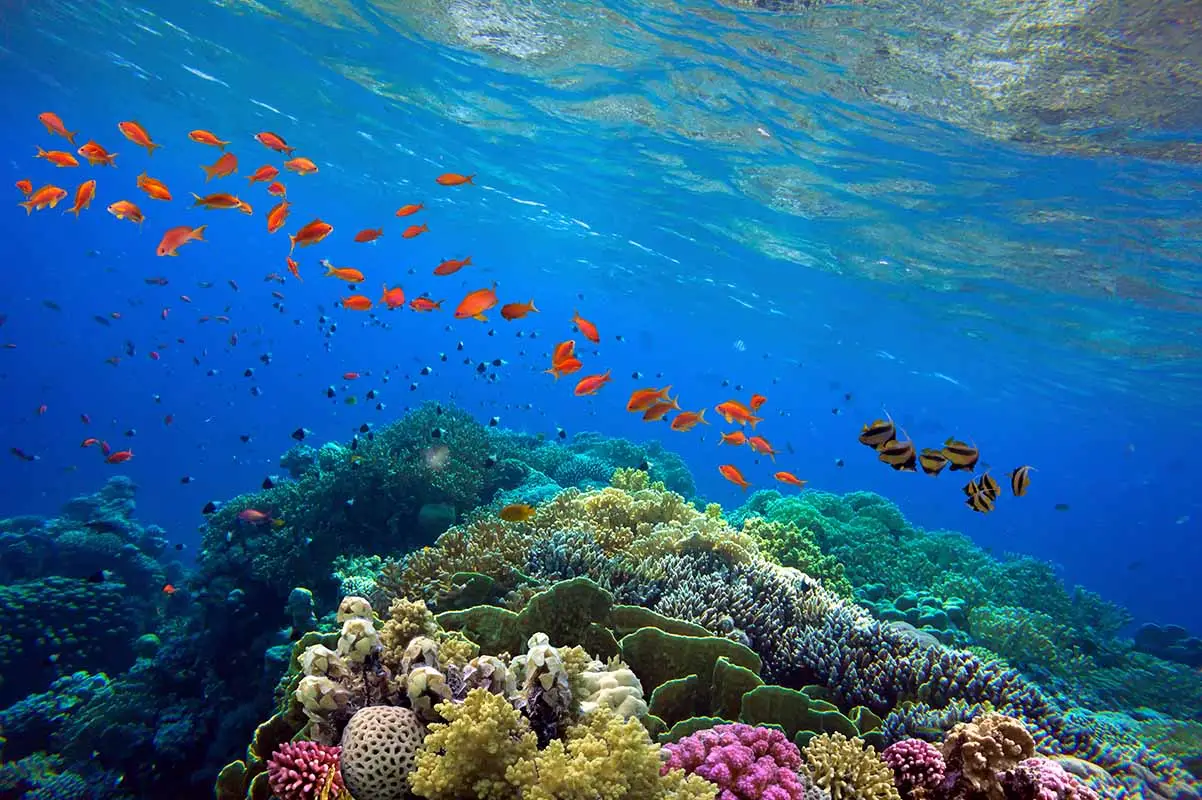Parrot fishes are truly a sight to behold. The vibrant colors and stunning patterns of these underwater creatures are a feast for the eyes. But there’s more to these aquatic animal than just their dazzling hues!
In this article, we’ll dive into the world of parrot fish and explore their unique anatomy, fascinating behavior, and the important role they play in marine ecosystems.
An Introduction to Parrot Fishes
What are Parrot Fish?

If you’re not familiar with them, you might be wondering just what these creatures are. Well, they’re a type of marine animal that belong to the family Scaridae. They are known for their beak-like jaws, which are used to scrape algae off of rocks and coral.
Scaridae are found in tropical and subtropical waters around the world. They come in a variety of colors, including blue, green, yellow, and red. Some species family scaridae can grow up to three feet long!
The Importance of Parrot Fish in Marine Ecosystems
Parrot fish are also important prey for many species of larger predators, such as sharks and groupers. Without parrot fish, these predators would have a harder time finding food.
In addition to their ecological importance, parrot fish are also a popular target for recreational fishing. However, overfishing can have serious consequences for parrot fish populations and the health of coral gardens.
The Vibrant Colors and Patterns of Parrot Fishes
The Science Behind Their Dazzling Hues

One of the most striking things about parrotfish is their incredible colors. So, why are these creatures so brightly colored? Well, there’s actually a scientific reason for this – parrotfish use their colors for communication and to attract mates. They can even change color to match their surroundings, which helps to camouflage them.
However, there’s more to the story than just communication and mating. It bright colors also serve as a warning to potential predators. These sea creature produce a mucus-like substance that makes them unappetizing to predators, and their bright colors serve to reinforce this warning. In fact, some species of parrot fish are poisonous, and their colors act as a visual cue to predators to stay away.
Color Variations Among Different Species
Parrotfish come in a variety of colors and patterns, depending on the species. For example, the green humphead parrotfish has a bright green body with pink and blue accents on its head and fins, while the midnight parrotfish is a deep blue-black color with bright orange and yellow markings.
In addition to their colors, parrotfish also have unique patterns on their scales. These patterns can vary greatly between species and even between individuals within a species.
The Role of Colors in Communication and Mating
As we mentioned earlier, parrotfish use their colors to communicate with each other and to attract mates. They can signal aggression or submission, and males will often display their brightest colors when trying to attract a female.
Interestingly, the colors of parrotfish can also change depending on their mood or environment. For example, if a fish is feeling threatened, it may change its colors to appear larger and more intimidating. Additionally, if a fish is in a dark environment, it may change its colors to blend in with its surroundings, making it harder for predators to spot.
The Unique Anatomy and Adaptations of Parrot Fish

Parrotfish are a diverse group of fish that can be found in tropical and subtropical waters all around the world. These aquatic vertebrate are known for their bright colors and unique anatomy and adaptations that make them stand out from other marine creatures.
The Beak-like Jaws and Their Function
One of the most unique features of parrotfish is their beak-like jaws. These powerful jaws are made up of fused teeth that continuously grow and are replaced throughout the fish’s lifetime. The beak-like jaws are used to scrape algae off of rocks and coral, which is why parrotfish are sometimes referred to as “reef lawnmowers.”
The scraping action of the jaws not only helps the fish to feed, but it also serves an important function in maintaining the health of coral colony. By removing algae from the coral surfaces, parrotfish help to prevent the algae from smothering and killing the coral if left unchecked.
The Mucus Cocoon for Protection
Another interesting adaptation of parrotfish is the mucus cocoon that they use for protection. When a parrot fish senses danger, it will secrete a mucus from its skin that surrounds it in a slimy cocoon. This makes it difficult for predators to catch and eat the prey.
As the parrot fish sleeps at night, the cocoon protects it from parasites that are attracted to the fish’s scent. The mucus cocoon is so effective that it has inspired researchers to develop new types of protective coatings for human use.
The Fascinating Behavior of Parrot Fishes
The Social Structure and Hierarchy

Parrotfish are social creatures and often form schools, which can consist of hundreds of individuals. Within a school, there is usually a hierarchy with dominant males at the top. These dominant males will aggressively defend their territory and mates from other males.
Interestingly, parrotfish can change their sex throughout their lives. They are born as females and will often change into the other one as they grow larger and older. This means that the dominant males in a school may have started out as females!
Mating Rituals and Reproduction and Sleeping Habits
Parrotfish have unique mating rituals that involve courtship displays and brightly colored males trying to attract females. The males will often display their bright colors and swim in circles around the females to show off their strength and agility.
Once mating occurs, the female will lay gametes and the male will then fertilize. The eggs are usually laid on a hard surface like a rock or piece of coral. The male will then guard the eggs until they hatch, which can take anywhere from a few days to a few weeks.
Believe it or not, parrotfish actually sleep at night, just like we do! They will often find a safe spot to hide and secrete the mucus cocoon we mentioned earlier for added protection.
Coral Reefs: Guardians of Biodiversity

Coral reefs, often referred to as the rainforests of the sea, are vibrant and diverse ecosystems that teem with life. These magnificent underwater structures provide a vital habitat for a multitude of aquatic vertebrate species and other species. Among the countless inhabitants, parrot fish stand out as key players in maintaining the delicate balance of these ecosystems.
Coral reefs themselves provide the essential hard surfaces on which parrotfish and other species thrive. Additionally, the family Labridae, which includes various underwater dweller species, contributes to the overall health of these ecosystems. Through their feeding behaviors, these fish control algal growth, ensuring the survival of coral polyps.
In the Western Atlantic and Indo-Pacific regions, parrotfish species such as Scarus ghobban and Callyodon fasciatus play vital roles in reef ecosystems. Their diet primarily consists of algae, which they skillfully scrape off the coral’s surface using their beak-like mouths. In the process, they inadvertently assist in the creation of sandy seabeds, as the corals they consume are ground into fine particles.
Conclusion
Coral reefs are exquisite habitats supporting lot of species. Within this ecosystem, parrot fish shine as prominent fish species, owing to their mesmerizing appearances and essential ecological roles.
Their feeding behaviors, along with other species in the reef, contribute to the well-being of the coral colonies, maintaining the balance between coral and algae. To protect and preserve these precious underwater marvels, it is crucial that we continue to understand and appreciate the intricate web of life they harbor.

